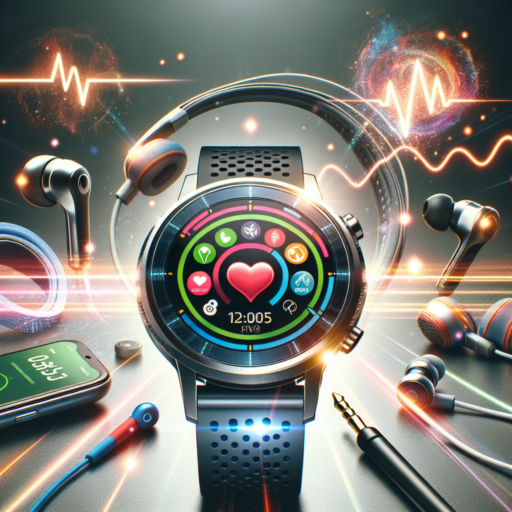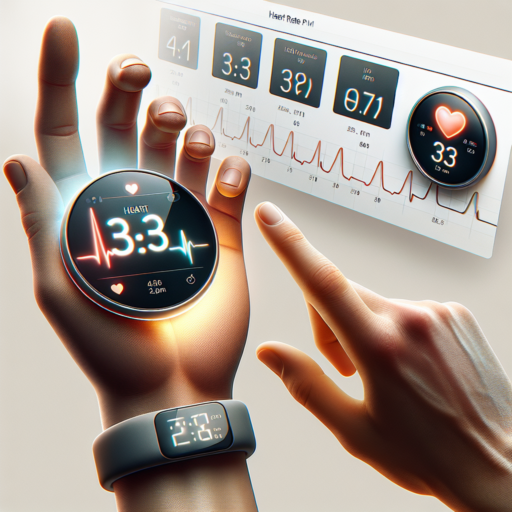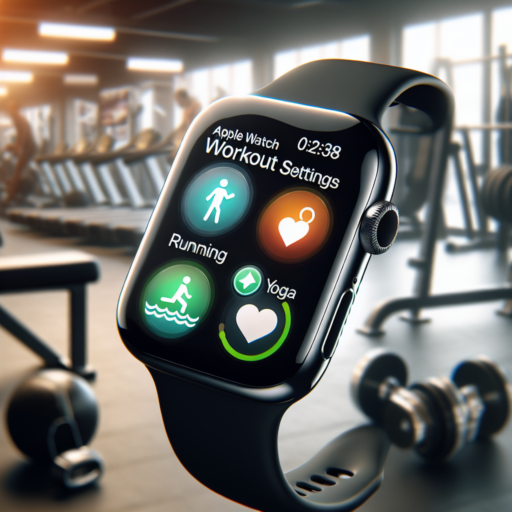Introduction to Sports Electronics: Enhancing Your Game
The realm of sports has been revolutionized by the advent of sports electronics, setting new benchmarks for performance and engagement. As athletes and enthusiasts strive for excellence, the integration of sophisticated gadgets and technology into their training routines has become a game-changer. Let’s delve into how sports electronics are not only enhancing our game but are also reshaping the landscape of competitive and recreational sports.
In the digital era, sports electronics encompass a wide range of devices designed to optimize training, improve performance, and prevent injuries. From wearable fitness trackers that monitor heart rate and calories burned, to advanced equipment like smart soccer balls or basketballs that provide instant feedback on your play, these gadgets are tailored to cater to the unique needs of each sport. The goal is clear: to leverage data and technology for a competitive edge.
The significance of sports electronics goes beyond mere performance metrics; they also play a crucial role in enhancing the overall sports experience. Through interactive training software, athletes can simulate game situations, analyze techniques, and receive personalized coaching, all of which are instrumental in honing their skills. Moreover, these high-tech tools not only benefit seasoned athletes but are equally valuable for beginners and amateurs, democratizing access to elite training methodologies.
The Top Benefits of Using Electronics in Sports Today
Enhanced Athletic Performance
The implementation of electronics in sports has significantly improved athletes’ performance levels. Tools such as wearable technology enable precise tracking of an athlete’s performance metrics, including heart rate, speed, and stamina. This data-driven approach allows for customized training programs that focus on individual athlete’s weaknesses, turning them into strengths over time. Consequently, the use of electronics has made training sessions more efficient and effective, leading to superior performance in competitive environments.
Improved Fan Engagement
Another notable benefit of using electronics in sports is the enhanced fan engagement it facilitates. Through apps and online platforms, fans can access live stats, replays, and even virtual reality experiences that bring them closer to the action than ever before. This level of engagement not only enriches the fan experience but also opens up new avenues for marketing and fan monetization for sports teams and leagues. By leveraging electronic mediums, sports entities can create a more engaging and immersive experience for their audience.
Accurate and Fair Judging
Electronics have also revolutionized the way sports performances are judged. High-speed cameras, sensor technologies, and instant replay systems have made judging in sports far more accurate and transparent. This technology minimizes human error, ensuring that outcomes are fair and based on precise data. It’s particularly transformative in sports where split-second decisions and actions can determine the outcome, ensuring that athletes are rewarded for their true performance rather than being penalized due to oversight or error.
How to Choose the Right Sports Electronics for Your Needs
Choosing the right sports electronics can significantly impact your training sessions and performance. Whether you’re a professional athlete or a fitness enthusiast, the vast array of gadgets available can be overwhelming. From smart watches to heart rate monitors and GPS trackers, understanding what each device offers is crucial to making an informed decision.
Identify Your Sports and Fitness Goals
Before diving into the sea of options, it’s essential to identify your needs. Are you looking to improve your endurance, speed, or overall health? Different devices cater to various aspects of training, so knowing your goals will help narrow down your choices. A GPS watch might be perfect for long-distance runners, while a cycle computer could be ideal for cyclists.
Consider Compatibility and Integration
Another vital aspect to consider is how well the sports electronics integrate with other devices and apps you currently use. Compatibility with your smartphone or fitness apps allows for a seamless experience in tracking and analyzing your performance over time. Look for devices that support Bluetooth or ANT+ connectivity for easy data transfer and analysis.
Ultimately, the decision comes down to a balance between functionality, compatibility, and your specific sports needs. By carefully assessing these elements, you can choose sports electronics that not only enhance your training but also keep you motivated on your fitness journey.
Review of the Best Sports Electronics for 2023
Para este año, la tecnología deportiva ha dado saltos significativos, ofreciendo a los entusiastas del deporte una variedad de opciones innovadoras para mejorar su entrenamiento, rendimiento y experiencia general. En nuestra revisión de los mejores dispositivos electrónicos deportivos para 2023, exploraremos algunas de las opciones más destacadas que están estableciendo nuevos estándares en el mundo del deporte.
Los Avances Imprescindibles en Relojes Inteligentes Deportivos
Los relojes inteligentes se han vuelto casi indispensables para los atletas de todos los niveles, gracias a sus funcionalidades mejoradas y su precisión sin precedentes. Marcas como Garmin, Apple y Fitbit han lanzado modelos que no solo rastrean la actividad física y la salud con una exactitud asombrosa sino que también incorporan funciones relacionadas con la salud mental y el bienestar, como seguimiento del sueño y ejercicios de respiración. Esta tendencia hacia un enfoque más holístico en la tecnología deportiva es algo a observar.
Pulseras de Actividad y Monitores de Ritmo Cardíaco
Para aquellos que buscan dispositivos más especializados, las pulseras de actividad y los monitores de ritmo cardíaco se han sofisticado enormemente. Marcas lideres están innovando con sensores que pueden medir con gran precisión aspectos como la saturación de oxígeno en sangre, la variabilidad del ritmo cardíaco y hasta el nivel de estrés del usuario. Estos dispositivos no solo son importantes para el entrenamiento deportivo sino también para mantenerse en óptimas condiciones de salud.
La integración de estas tecnologías con las aplicaciones de fitness también ha alcanzado nuevos niveles. Ahora es posible obtener análisis detallados de tus entrenamientos, consejos personalizados y planes de entrenamiento ajustados a tus métricas personales directamente desde tu dispositivo. La capacidad de estas tecnologías para conectarse y compartir datos con entrenadores y profesionales de la salud, proporcionando un enfoque más colaborativo y personalizado para el rendimiento deportivo y la salud, marca una diferencia notable en la eficiencia del entrenamiento y en la prevención de lesiones.
Cada uno de estos avances tecnológicos representa un paso adelante en cómo la electrónica deportiva puede ayudar a los atletas a alcanzar sus objetivos. Con dispositivos más inteligentes, personalizables y conectados, el 2023 se perfila como un año prometedor para la innovación en el mundo del deporte.
Innovative Features to Look for in Your Next Sports Gadget
In the world of sports and fitness, innovation is key to achieving better results, enhanced performance, and a more engaging exercise routine. With the rapid pace of technological advancements, it’s crucial to stay updated on the latest features that can redefine your training sessions. When considering your next sports gadget purchase, there are several innovative features that stand out and promise to elevate your fitness experience.
Advanced Tracking Capabilities
Today’s sports gadgets go beyond basic step counting. Look for devices that offer comprehensive tracking capabilities, including heart rate monitoring, sleep analysis, and VO2 max estimation. The best gadgets provide real-time feedback and detailed analytics, allowing you to tailor your workouts more precisely to your fitness goals. This personalized data is invaluable for those looking to optimize their performance, recover properly, and understand their body’s signals.
Integration with Smart Ecosystems
In a digital-first world, the ability of your sports gadget to seamlessly integrate with other smart devices and systems can significantly enhance its value. The integration with mobile apps, smartwatch connectivity, and even home automation systems for post-workout relaxation and recovery routines ensure that your fitness journey is as smooth and efficient as possible. Look for gadgets that support open platforms or have strong partnerships with leading technology providers, enabling a cohesive and interconnected experience.
Personalized Coaching and AI Assistance
Artificial intelligence (AI) has transformed how we interact with technology, and sports gadgets are no exception. Advanced devices now offer personalized coaching, real-time performance correction, and motivational support
through AI-driven interfaces. These features not only help in refining your technique but also ensure that you stay committed to your fitness goals. The ability of a gadget to adapt its feedback and advice based on your progress and challenges is paramount for sustained improvement and engagement.
By focusing on these innovative features, you can ensure that your next sports gadget not only tracks your journey but actively contributes to your fitness achievements. Whether you’re a professional athlete or a fitness enthusiast, these cutting-edge capabilities are designed to make your workouts more informed, enjoyable, and effective.
Integrating Sports Electronics with Mobile Apps for a Comprehensive Experience
The evolution of sports electronics has been nothing short of revolutionary, offering athletes at all levels tools for performance tracking, injury prevention, and training optimization. When these devices are integrated with mobile apps, the result is a comprehensive experience that brings real-time data and analytics directly to the user’s fingertips. This synergy allows for a more tailored approach to training, ensuring that athletes are not only performing at their peak but are also minimizing their risk of injury through overtraining or incorrect form.
Personalization at Its Core is what sets this integration apart. Sports electronics, ranging from wearables like fitness trackers and heart rate monitors to equipment such as smart bikes and treadmills, provide a wealth of data about an athlete’s performance. When this data is fed into mobile apps, it can be used to create personalized training programs that adjust to the athlete’s progress, fitness level, and goals. This level of customization ensures that workouts are both effective and enjoyable, fostering a more engaging and sustainable fitness journey.
Real-Time Feedback and Social Connectivity are further enhanced when sports electronics are connected to mobile apps. Athletes can receive immediate feedback on their performance, allowing for adjustments to be made on the fly. Additionally, these apps often incorporate social features, enabling users to share their achievements, set up friendly competitions, and offer support to one another. This aspect of community and competition can be incredibly motivating, turning the solitary act of training into a shared experience that drives performance and accountability.
Maximizing Training with Wearables and Trackers
In the era of digital fitness, maximizing training with wearables and trackers has transformed how athletes and fitness enthusiasts approach their workout routines. These devices are not just about tracking steps or monitoring sleep patterns; they are pivotal in crafting personalized training programs that can significantly enhance performance and prevent injuries. By analyzing data gathered from wearables, individuals can gain insights into their physical activities, allowing for adjustments in intensity, duration, and type of exercise for optimal results.
Wearables and trackers offer a plethora of features designed to cater to a wide array of fitness goals. From measuring heart rate variability (HRV) to tracking VO2 max, these devices provide users with critical data that can inform their training decisions. For instance, by understanding HRV, athletes can optimize their training schedules to match their body’s recovery state, ensuring they train at their peak while reducing the risk of overtraining. Similarly, monitoring VO2 max can help users gauge their aerobic fitness levels, making it easier to set realistic and achievable goals.
Moreover, the integration of wearables and trackers with mobile apps and online platforms enhances the training experience by offering a seamless way to analyze data, set goals, and track progress. This connectivity not only motivates users by providing visual representations of their achievements but also enables sharing successes with a supportive community. Furthermore, it opens the door to personalized coaching and advice, as fitness professionals can access the data to tailor recommendations and adjustments to training regimens directly catered to the individual’s needs and progress.
The Impact of Electronics on Team Sports and Coaching Strategies
The integration of electronics into team sports has significantly altered coaching methodologies and player development. This evolution has been particularly pronounced in the way analytics and wearable technology are used to enhance performance and strategy.
Advanced Analytics in Game Planning
Through the use of advanced analytics, coaches can now dissect game data with unprecedented detail. This involves scrutinizing player movements, strategies, and opponents’ tactics with the help of software that can process vast amounts of data quickly. By analyzing trends over multiple games, coaches can tailor their strategies more precisely to counteract the strengths of their opponents while exploiting their weaknesses.
Wearable Technology for Performance Monitoring
On the players’ side, wearable technology such as GPS trackers and heart rate monitors are revolutionizing training and recovery processes. These devices provide real-time data on an athlete’s physical condition, enabling coaches to make on-the-spot decisions about a player’s participation in the game. Furthermore, long-term monitoring allows for the preparation of personalized training programs that aim at optimizing each player’s performance while minimizing injury risks. This shift towards data-driven decision making underscores the value of electronics in modern sports coaching strategies.
Maintaining and Caring for Your Sports Electronics
Maintaining your sports electronics is crucial to ensure they last longer and continue to provide accurate data and performance insights. These devices, designed to withstand intense activities, still require regular care and maintenance. From smart watches to heart rate monitors, each device has specific needs that, when attended to, can significantly extend its operational lifetime and reliability.
Cleaning Tips for Your Devices
- Wipe down the device after each use: Sweat and dirt can accumulate on your device, leading to potential skin irritations and device corrosion. Using a soft, damp cloth to gently wipe your device can prevent these issues.
- Avoid harsh chemicals: It’s tempting to use strong cleaners to ensure your device is germ-free, especially in today’s climate. However, harsh chemicals can damage the screen and casing. Opt for mild soap and water instead.
- Check for moisture: Even if your sports electronics are water-resistant, it’s crucial to dry them thoroughly. Lingering moisture can seep into crevasses, causing damage over time.
Battery Care and Charging
- Don’t overcharge: Keeping your device plugged in continuously can wear out the battery faster. It’s best to charge it fully and unplug it once it reaches 100%.
- Keep it cool: Exposing your device to high temperatures, especially while charging, can affect battery health. Make sure to charge your device in a cool, well-ventilated area.
By incorporating these maintenance and care steps into your routine, you can significantly improve the longevity and performance of your sports electronics. Remember, the condition of your device directly impacts its functionality and, consequently, the accuracy of the data it provides, which is integral for any athlete who relies on these measurements for training and performance evaluation.
Future Trends in Sports Electronics: What’s Next?
– Ultimate Guide’ relatedtext=’Quizás también te interese:’]
The world of sports electronics is rapidly evolving, with each year bringing innovative advancements that promise to redefine how athletes train, compete, and recover. As we look ahead, certain trends are emerging that seem poised to dominate the landscape of sports technology in the foreseeable future.
Wearable Technology Going Beyond Fitness Trackers
While fitness trackers have been at the forefront of sports electronics for years, the future lies in more advanced wearable technologies. These next-generation devices will offer deeper insights into athletic performance and health metrics. Innovations like smart fabrics that monitor muscle activity and shirts that measure heart rate and breathing patterns in real-time are just the tip of the iceberg. Such advancements will not only enhance athlete training regimes but also improve injury prevention and recovery processes.
Integration of Artificial Intelligence and Machine Learning
Artificial Intelligence (AI) and Machine Learning (ML) are set to revolutionize the sports electronics industry by providing personalized training programs and predictive analytics for performance improvement. These technologies can analyze vast amounts of data from wearable devices, offering tailored suggestions for optimizing an athlete’s training and preventing potential injuries. The integration of AI and ML into sports electronics promises to unlock a new level of personalized athlete training and rehabilitation, making it a trend to watch closely.
As these trends continue to develop, the future of sports electronics appears incredibly promising, poised to bring groundbreaking changes to the way athletes train and perform. With the integration of advanced technologies like AI, ML, and innovative wearables, the next era of sports electronics is set to offer unprecedented insights into athletic performance and health.










